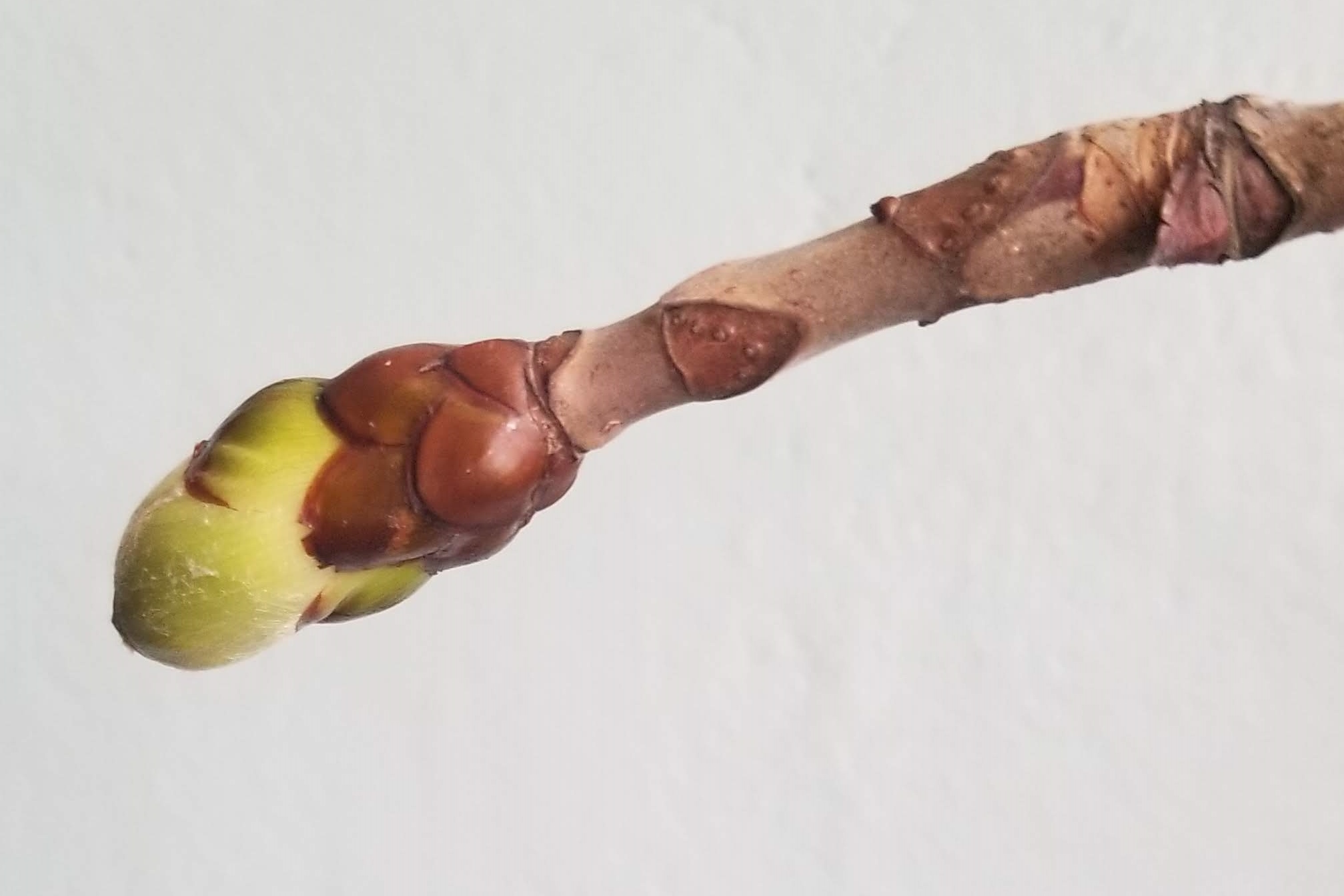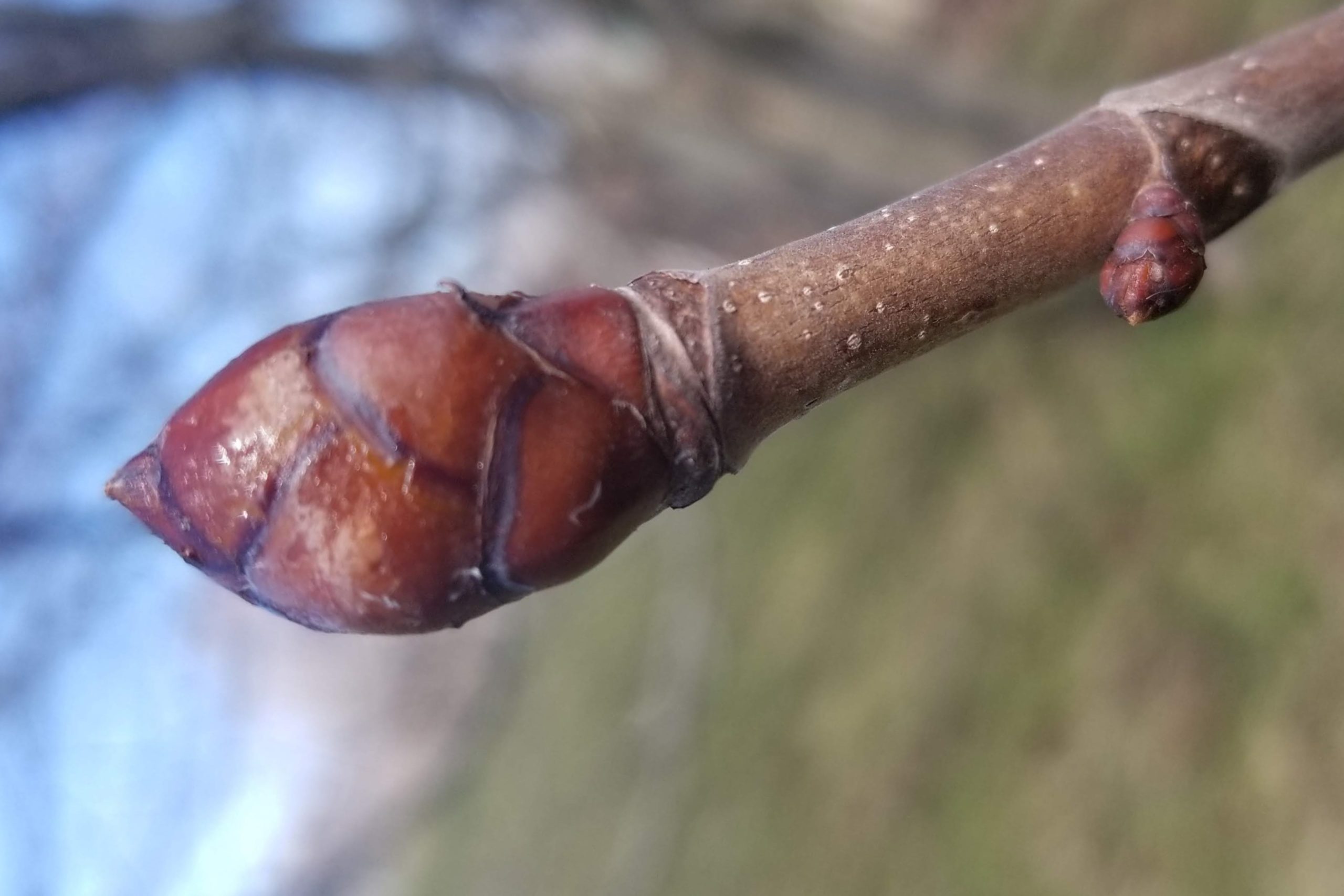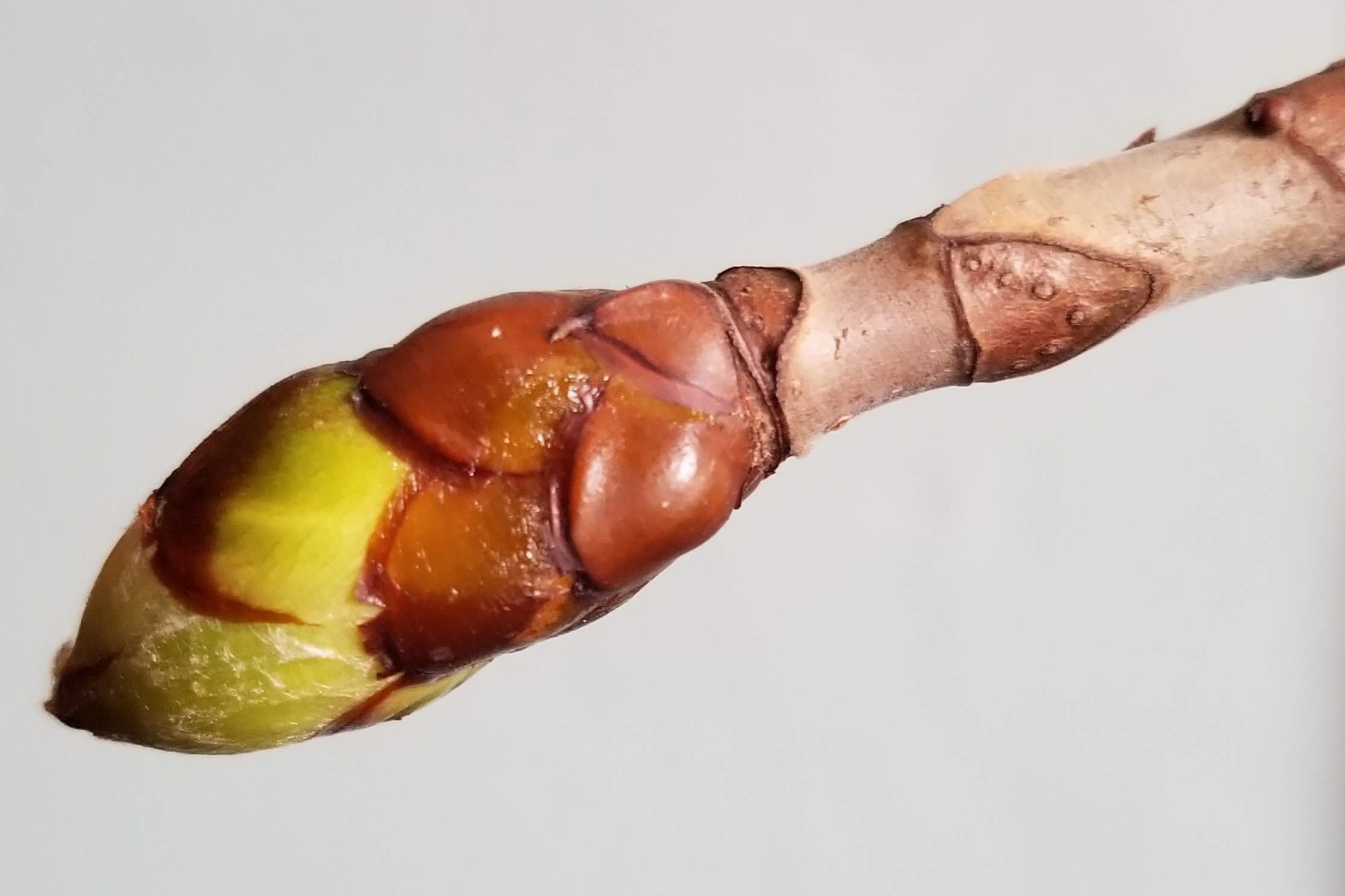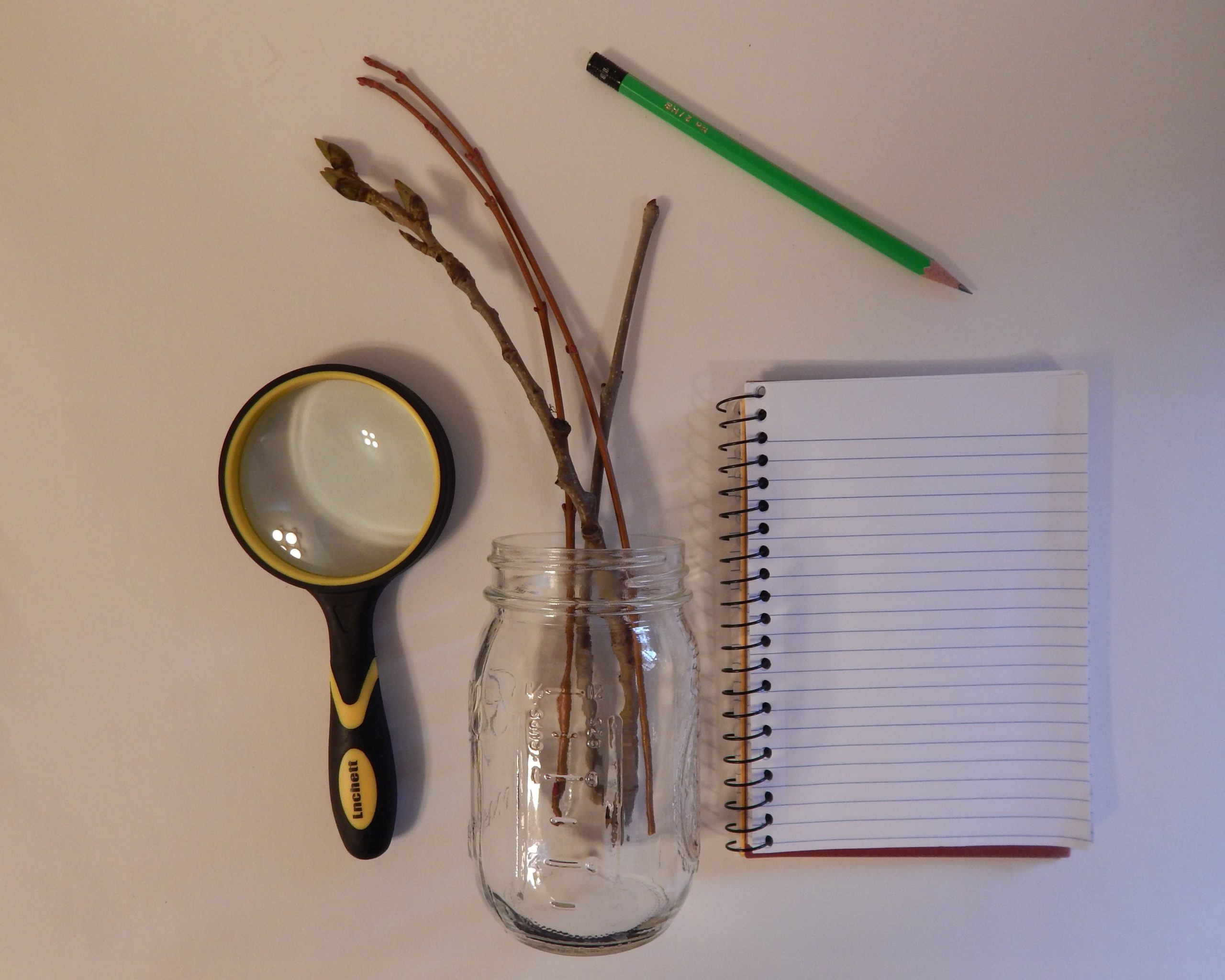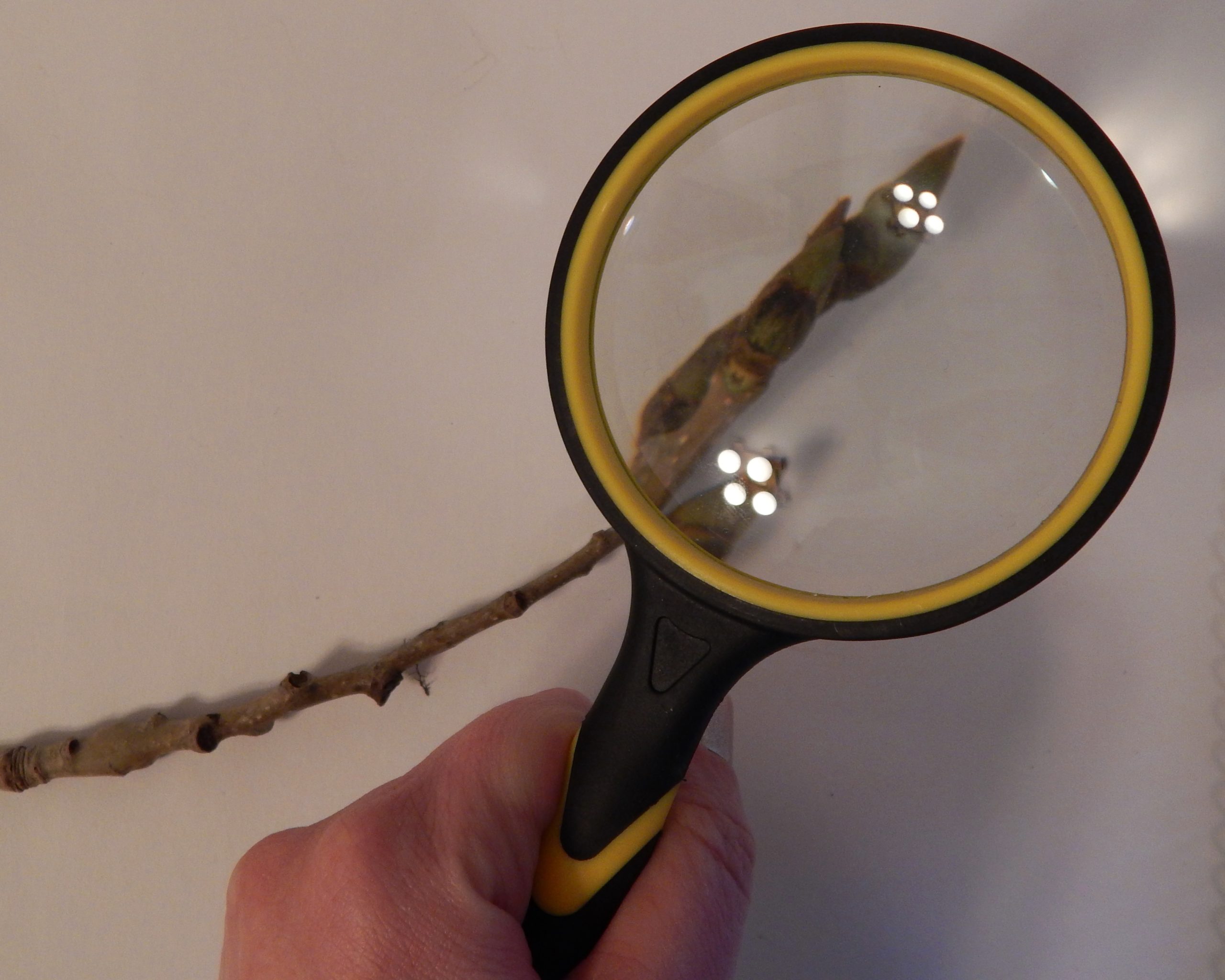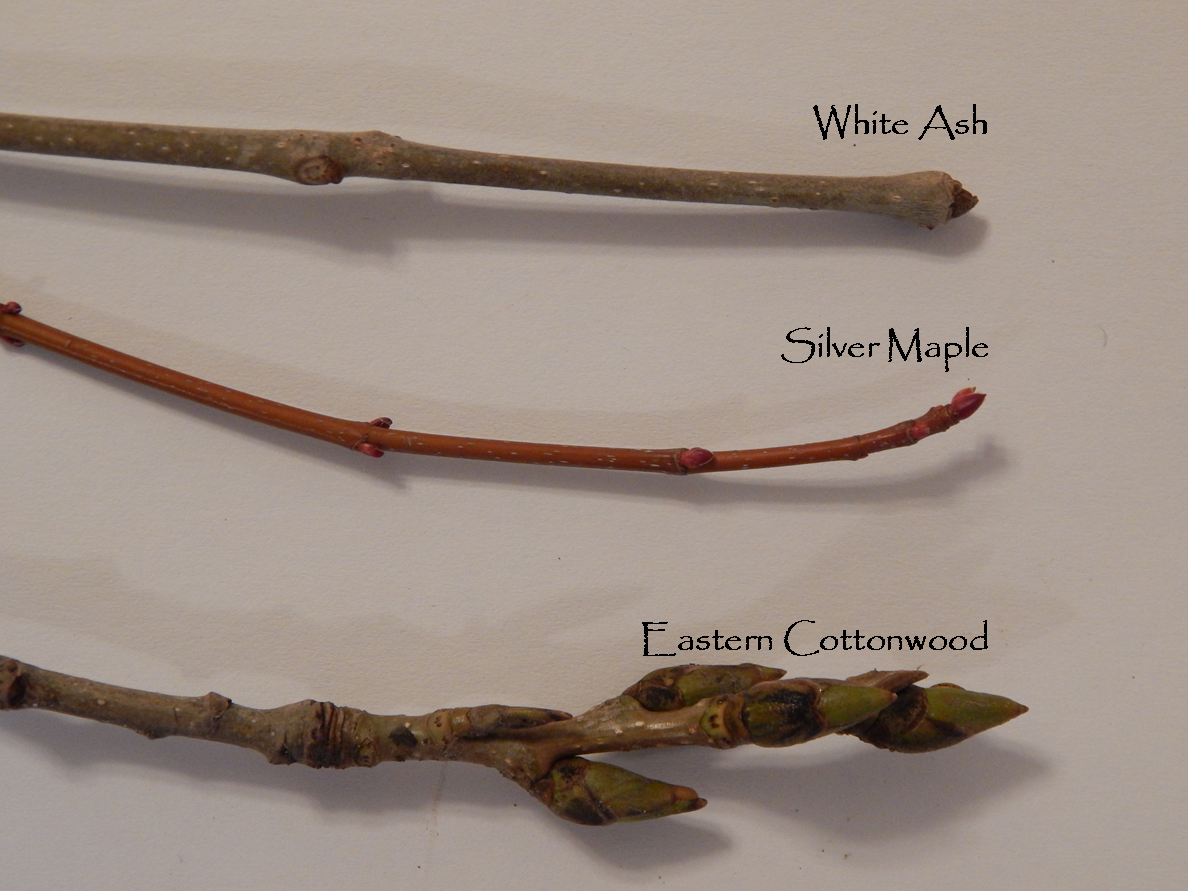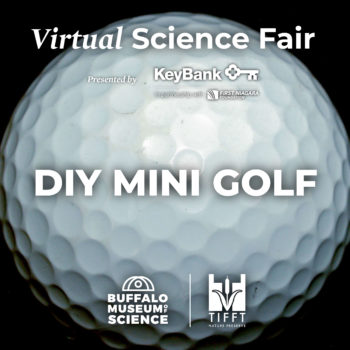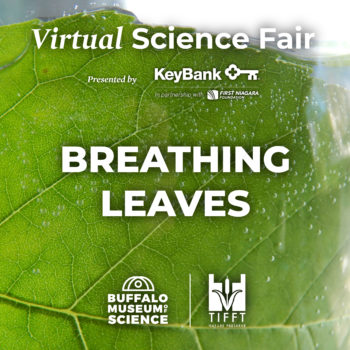Best Buds
Have science fun as a family! Complete activities with parental supervision.
Materials:
- A deciduous tree or shrub
- Pencil or other art materials
- Paper
- Optional:
- Magnifying glass
- Camera
- Pruners
- Vase or similar container
Procedure
- In your yard or neighborhood, find a deciduous tree (a tree without leaves during the winter), on which you can easily reach and observe some of the twigs and branches.
- Carefully observe the branches or twigs. What do you notice?
- Use this graphic to find the different parts of each twig. Where is the terminal bud? Where is a leaf scar? Can you determine how much the twig grew in the past year? Use a magnifying glass to inspect more closely, if you have one.
- Let’s examine the buds more carefully. Have they started to open yet? Some buds open to reveal leaves and some are flowers. How can you tell the difference?
- Find a comfortable place to settle in near your tree. Draw a picture and write a short description of the twigs and buds. Try to capture all of the small details including the colors you see. Check out an example from our Tifft Nature Preserve team here! Don’t forget to label your drawing. You have created the first page of a nature journal!
- With a parent’s supervision, visit Champaign County Forest Preserve District’s website and use their guide to help identify the trees you observed. There are so many kinds of trees in Western New York and even more when you consider the trees that landscapers may have planted in your yard or neighborhood.
- Investigate your tree for other characteristics to help you with identification. Record this in your Tree Diary/Journal. Look at the bark texture, the arrangement of the branches, the shape and size of the whole tree, what habitat the tree is living in. Are there last year’s leaves on the ground under the tree?
- Keep adding to your journal (or Tree Diary) throughout the spring, summer and fall. Check on your trees once a week and draw and write a description of what you are observing on the trees each time. Are there any signs of animals using your trees?
- Be sure to take a picture or video to share in the Facebook comments on the Buffalo Museum of Science or Tifft Nature Preserve pages!
What’s it all about?
Each tree species has many different characteristics that help us identify it. One of the easiest ways is to look at the leaves, but that isn’t the only way. Every deciduous tree species (trees that lose their leaves in winter) has different shaped buds at the end of their branches. Some are fat and round, some are slender and some you can barely see unless you look closely.
Buds form in the fall when the tree still has enough energy from the sunny summer but we tend to not notice them until spring when they develop in leaves and flowers. This means that we can use buds during the winter and early spring to help identify trees.
Sometimes the differences between buds are easy to recognize and sometimes they are harder. With a bit of practice we can identify, understand, and appreciate our tree-mendous neighborhood trees all year-long! Get outside and meet some trees!
Try It!
- In addition to journaling, take photographs of your tree over the next few weeks: close-ups of the buds and the whole tree from a distance.
- Optional (with adult permission and supervision): Prune a small branch (6-18 inches) from the different trees, bring inside, and place in a vase of water. Record (draw, write or photograph) the bud’s appearance on a daily basis.
